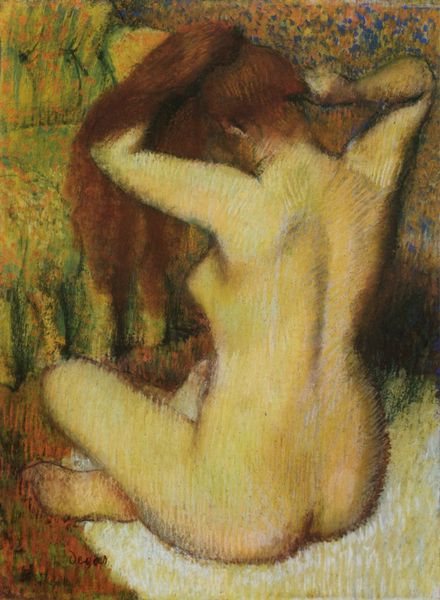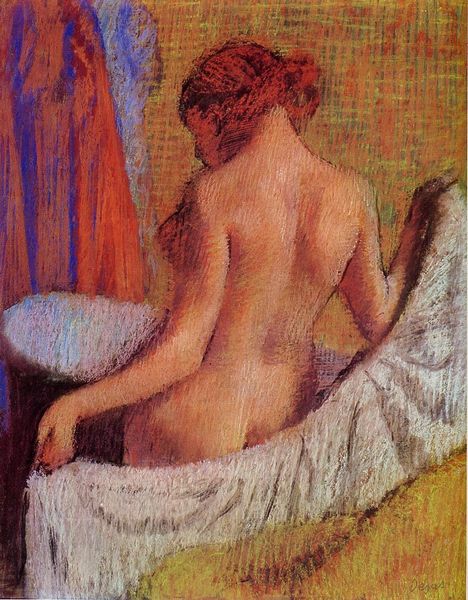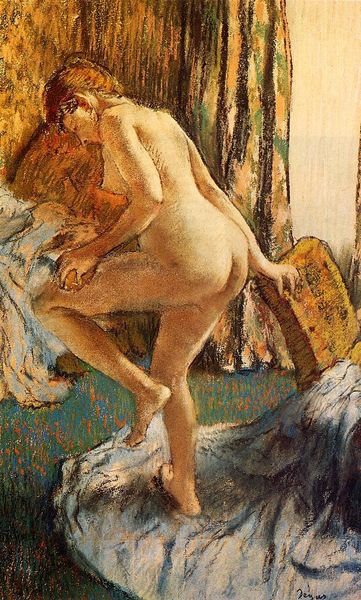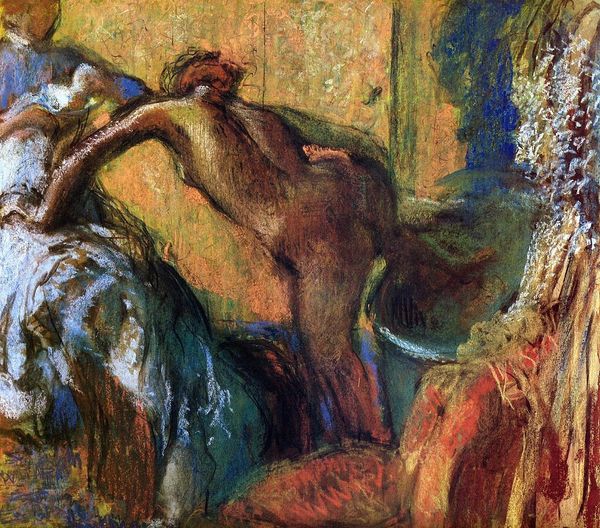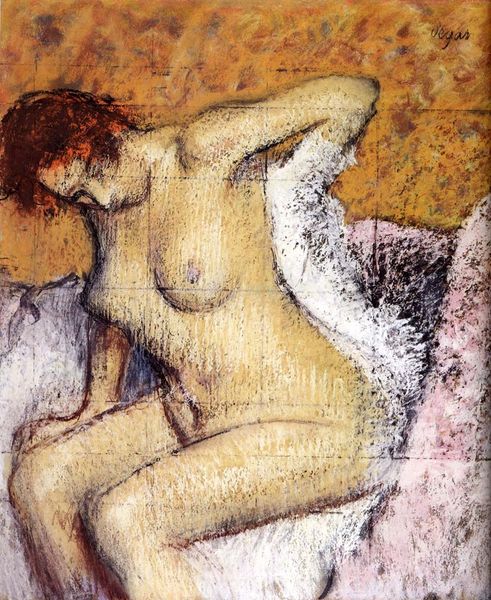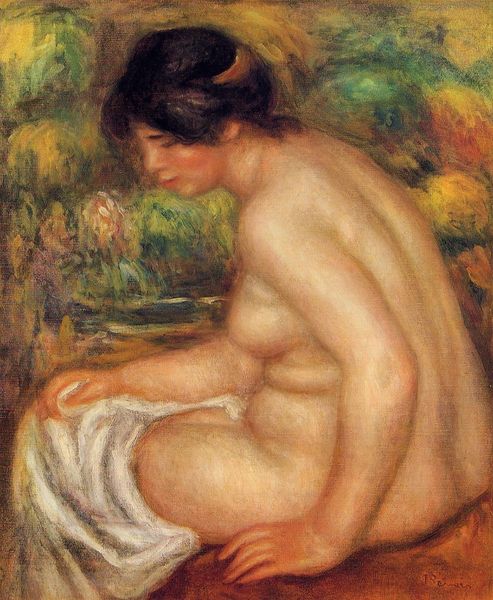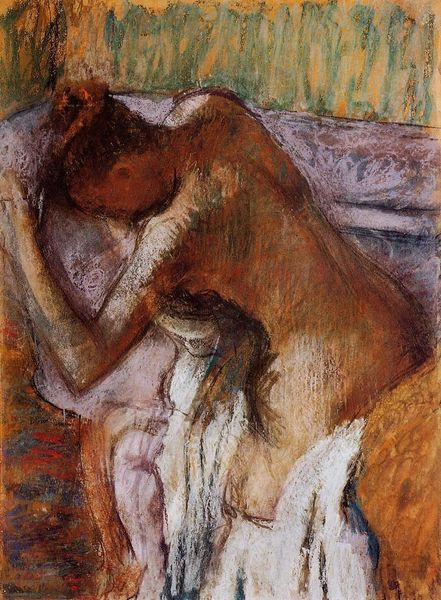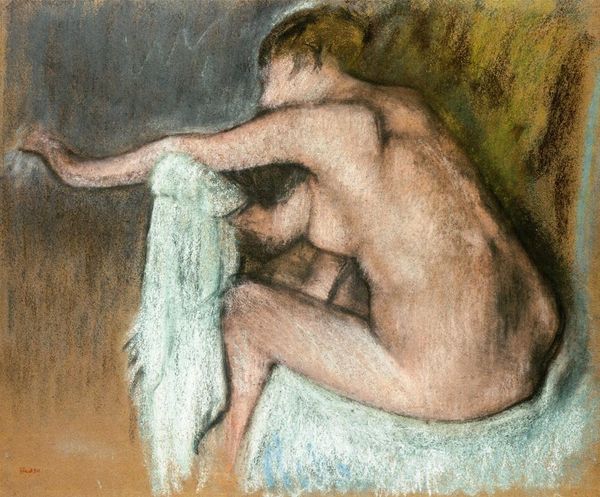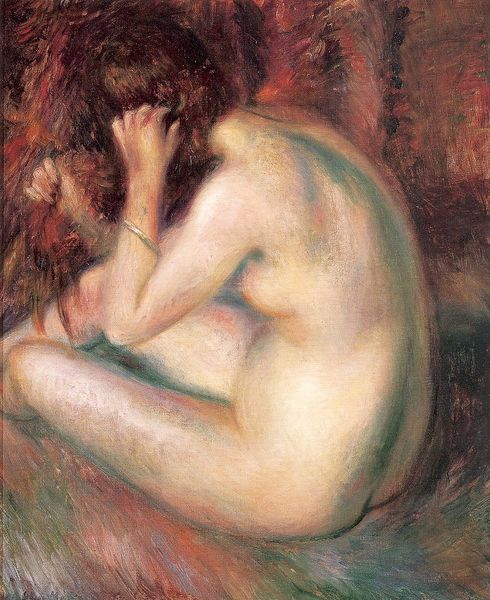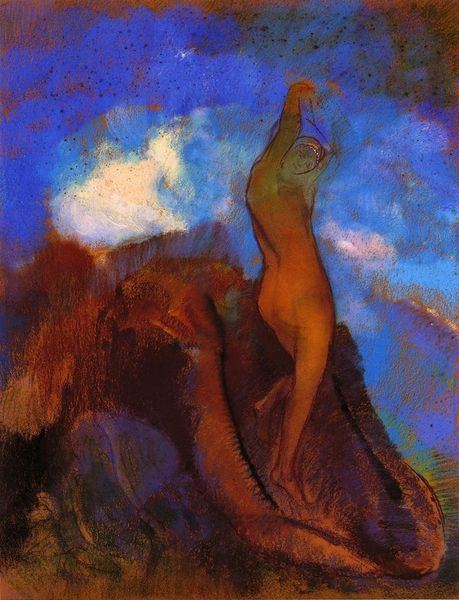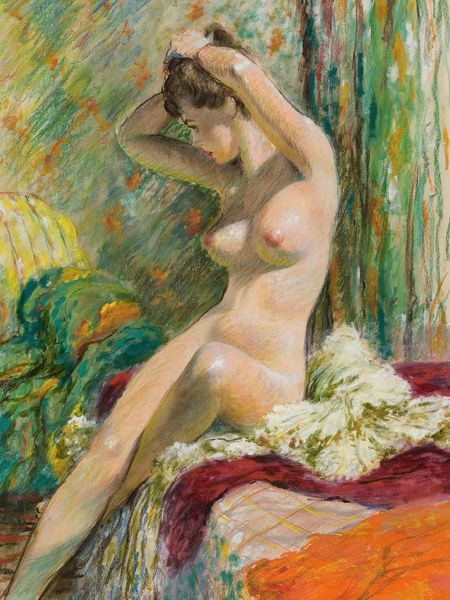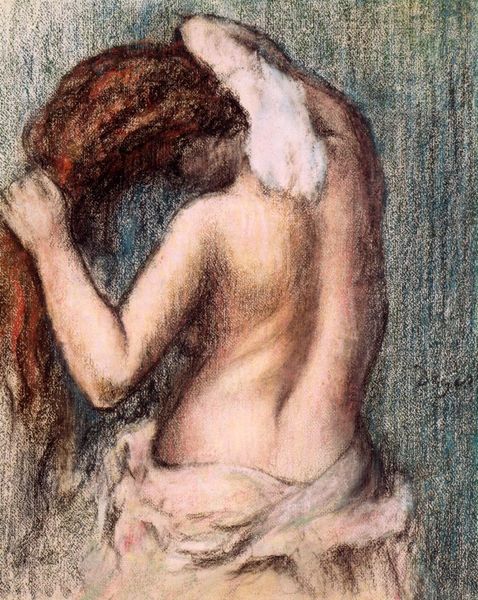
Copyright: Public domain
Edgar Degas made this pastel drawing, called 'After the Bath,' sometime during the late 19th century. His work invites us into a private moment of a woman drying herself. During this period, the female nude was a common subject in art, often idealized and presented for the male gaze. But here, Degas disrupts those traditions. There’s an intimacy to this piece. The woman's body is not presented as an object but is seen in a moment of everyday life. Degas wasn't interested in conventional beauty; instead, he aimed to capture the human form in natural, unposed attitudes. There's an underlying tension between objectification and empathy, as Degas captures a private moment with a voyeuristic eye. We are left to consider the complex dynamics of looking, being seen, and how art can both expose and conceal the inner lives of its subjects.
Comments
No comments
Be the first to comment and join the conversation on the ultimate creative platform.
